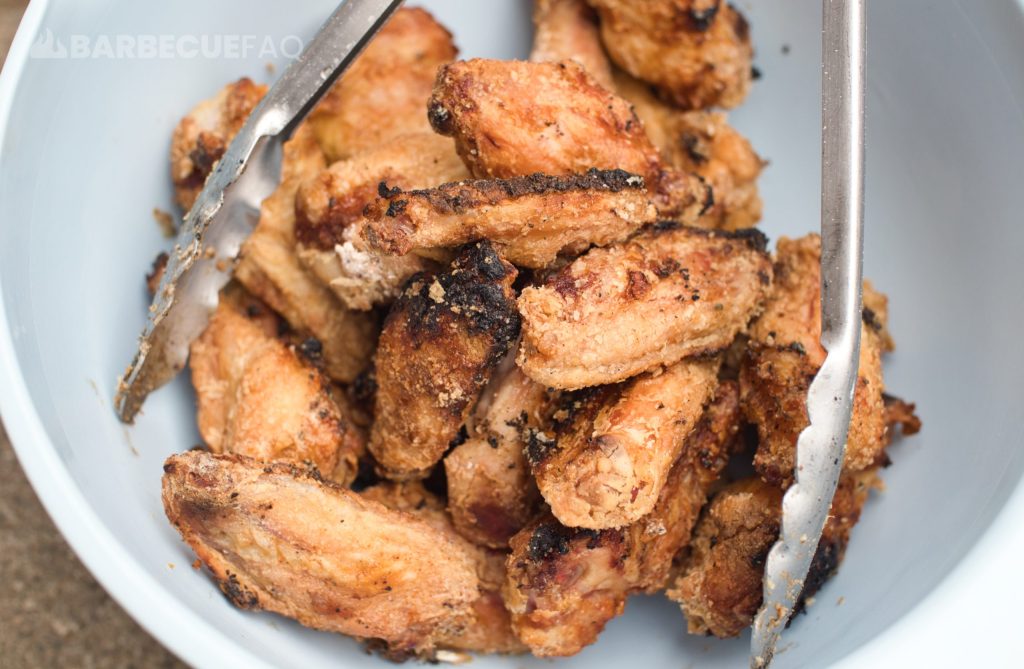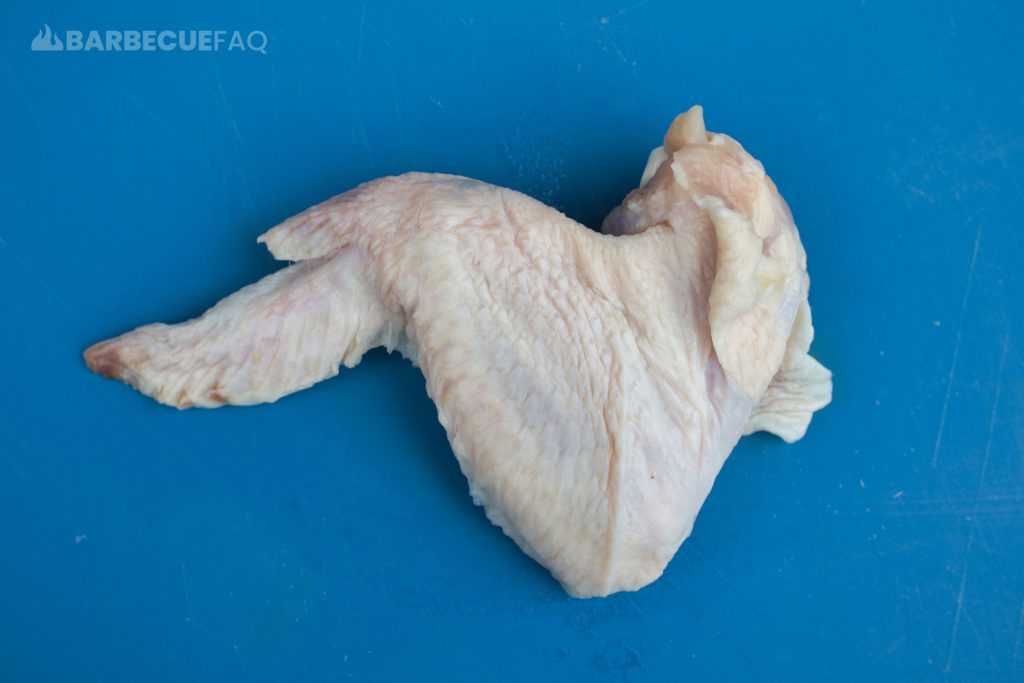I’ve found that for my taste preferences, the best wood for smoking chicken is maple – it offers a super light smoke flavor that’s in the background.
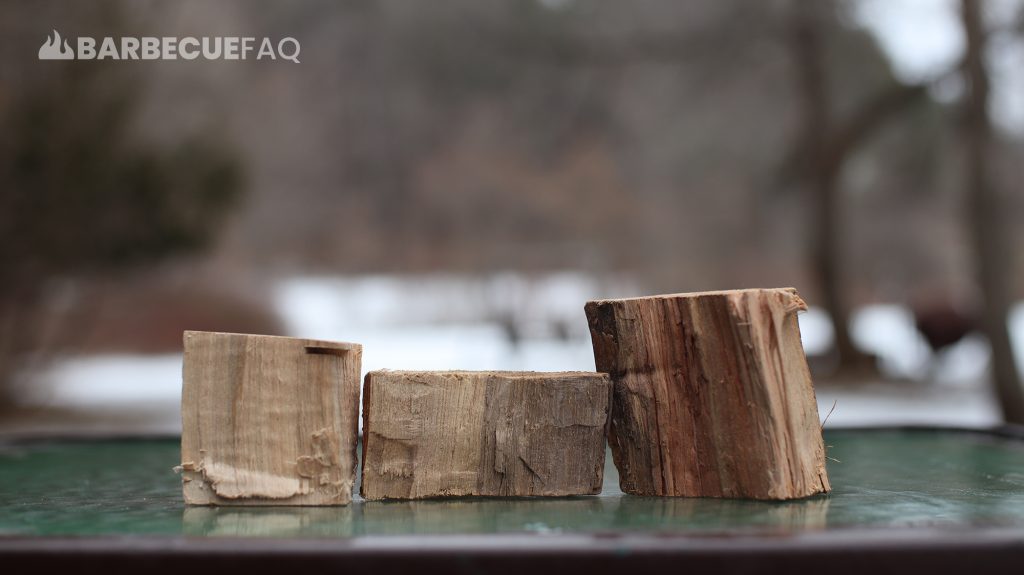
Aside from that, fruit-woods like apple or peach also tend to work quite well.
Post oak is also always a safe choice.
1. Maple Wood
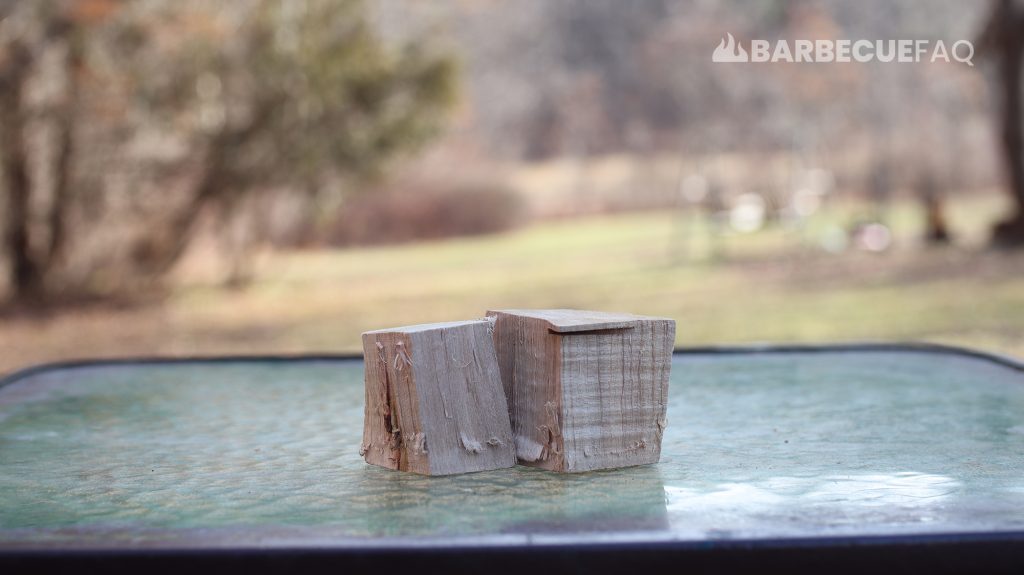
Chicken is a cut of meat that is very neutral in taste. It can take well to flavorings, seasonings, and marinades.
It’s the same story with smoke.
For this reason, I prefer a light smoke flavor that’s in the background as apposed to being upfront.
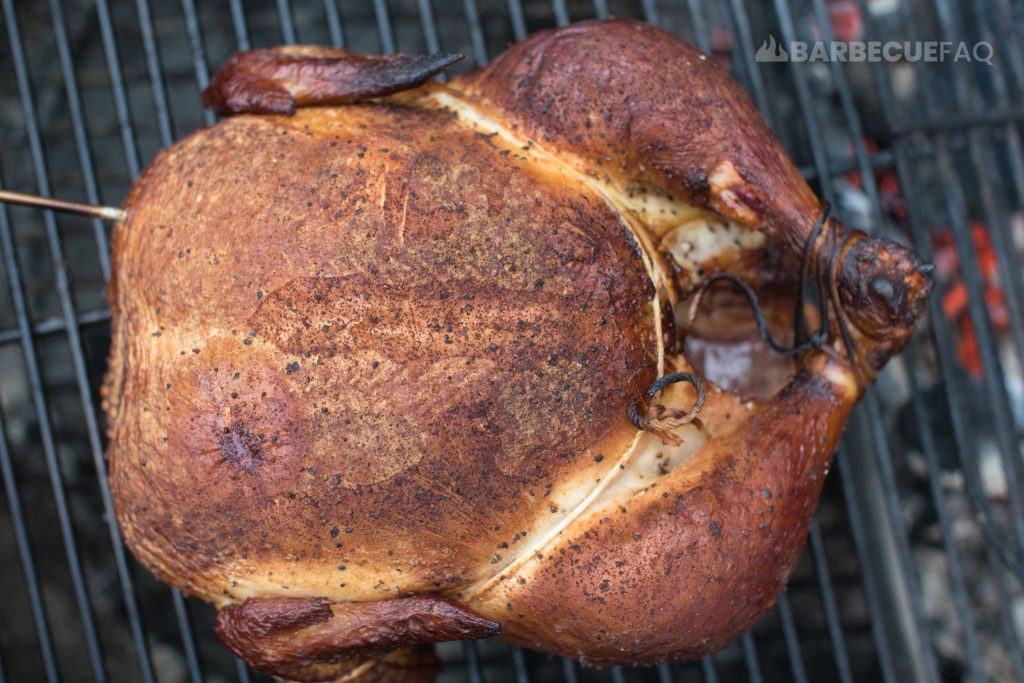
I’d rather taste the seasonings/marinade and then the smoke as apposed to the other way around.
If your preference is the other way around, i.e. you like lots of smoke with your chicken, flip my list.
Of the different types of wood people use to smoke with, maple is one of the lightest. It’s commonly used for delicate foods like vegetables and cheese.
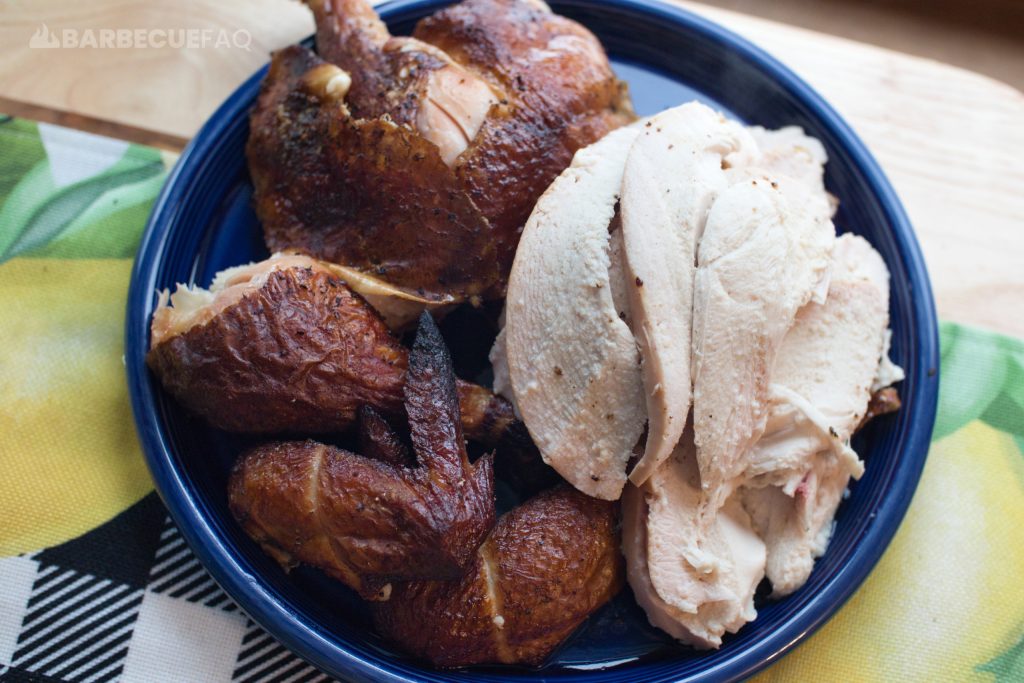
Something a lot of websites like to say is that the maple smoke is “sweet.” This is because sugar maple, red maple, silver maple, and black maple are all used in the production of maple syrup.
However, I personally don’t pick up on any “sweetness.”
There is definitely a “sweet” aroma – in a similar vein to other fruitwoods. In my opinion, it’s more or less your brain playing tricks on you – i.e. syrup is sweet so the smoke is sweet.
2. Apple Wood
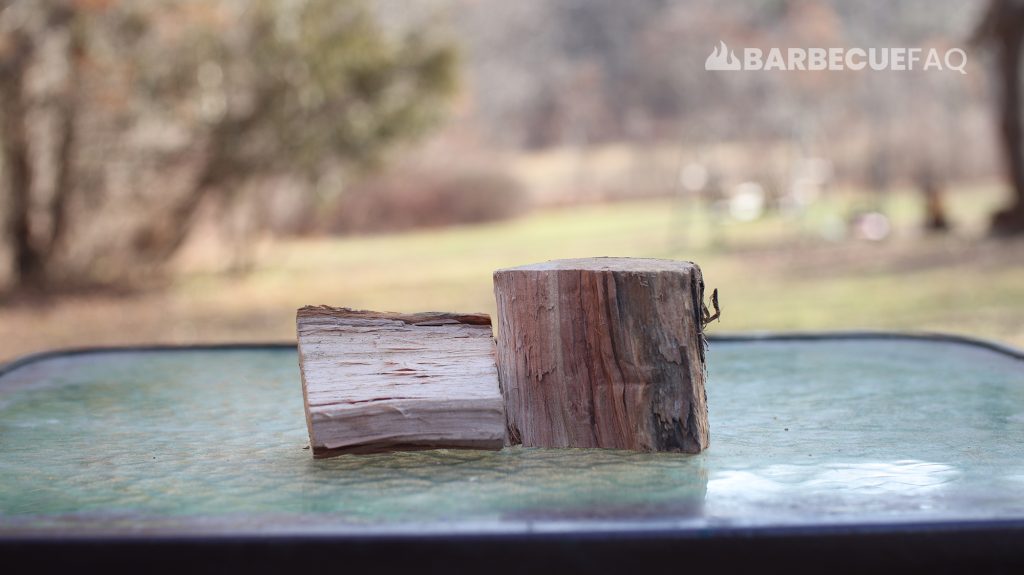
Apple is a wood that I’m not a big fan of using – however it works well with chicken.
The same reason I prefer Cherry wood over apple for pork ribs is the same reason I don’t recommend people use cherry for chicken – the color it imparts on meat.
A lot of people are put off by the red hue it offers chicken skin.
With that said, most fruit woods pair well with chicken.
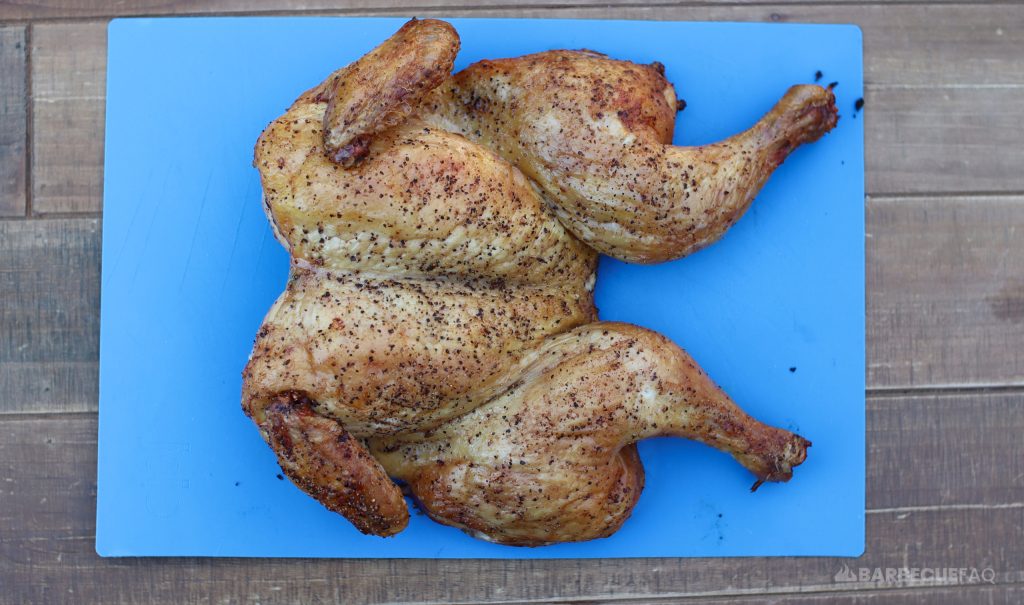
I personally prefer with chicken but it’s really hard to source where I’m from and I almost always will resort to using apple instead.
3. Post Oak
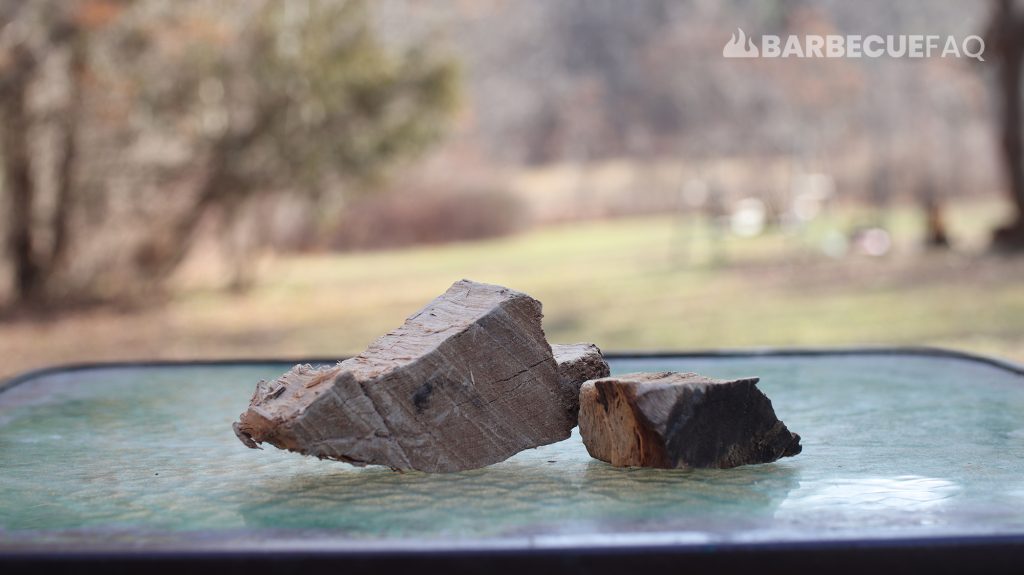
Post oak is a smoking wood that goes well with pretty much all types of meat, including chicken.
I’m personally a huge fan of using Post oak with beef cuts.
In terms of “smokey” flavor, Oak is about as far as I’d go with chicken. The members of my family, and even my friends, aren’t big on eating a mouth full of smoke – which chicken will take on easily.
Your goal with smoking meat should be to create layers of flavor.
In my opinion, the smoke is secondary or even tertiary. You should be able to taste the chicken, the rub, and the smoke.
A Quick Word About Hardwood “Flavors”
A lot of the websites and resources on the internet will tend to lead beginners in the wrong direction when it comes to hardwood smoke.

You’ll likely find articles, much like this one, that will essentially tell the reader to use X type of wood with Y type of meat.
The truth is, hard wood smoke doesn’t really work like that. More or less, it exists on a spectrum from mild to strong.
- Fruit-woods are considered mild – like apple, cherry, and peach.
- In the middle lies oak, pecan, and hickory.
- At the end is mesquite, which most folks would consider strong.
After this, the websites will then become very nuanced.
They’ll start describing the smoke like they’re a Sommelier who’s describing wine.
This is further complicated by the fact that the chemical byproducts of wood combustion are not universal and will depend on the species, age, and mineral composition of the soil.
Meaning, the “flavor” can change based on where the tree was grown.


